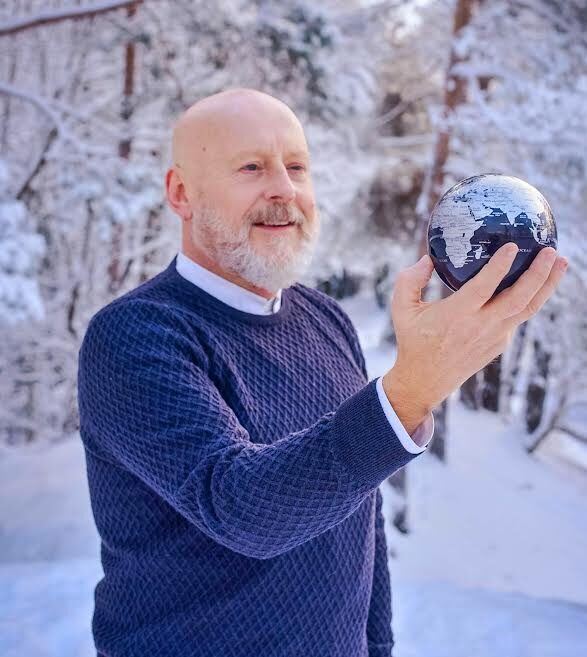The Faroe Islands, rocky mountains under a green carpet
When you see The Faroe Islands from the air, you see this beautiful landscape of small mountains covered with a bright green carpet. By plane is the most common way to arrive at Faeroes, but no doubt arriving by boat must also be impressive.

The trip to Faeroes was a turning point for me, and it started long before. I will share the reason briefly with you.
Some history
In my twenties, I went on Interrail in Europe for five months, within three years. On these trips, I did see most of the countries in Europe, including Eastern Berlin, through Tsjekkoslovakia and Yugoslavia, countries that do now exist today. I visited most tourist places and, to be honest, mainly saw the tip of the iceberg.

This was in the eighties, and I had some fantastic holidays. In 1991 I moved to London and entered a long-term relationship after university. Since he was Italian, we went many times to Italy for obvious reasons; we also went on a cruise on the Nile and later walked on the Chinese wall.

The change
After I became single again, I somehow started to feel that I had become a safe traveler. I revisited London every year and did things I had done before. At the same time, I longed to see new places, places that were not necessarily the most common places to visit. That was when I decided I must start traveling to the destinations of my dreams. And The Faroe island was the start of this new journey of traveling for me.

The Faroe Islands
The origin of the first settlers on Faeores is a bit uncertain. It might be Norvegian Munks coming there via Scotland or Ireland, and they must have brought with them sheep. What is certain is that many Norwegian fishers came here around 800. Olav Tryggvason, king of Norway around the year 1000, took possession of the islands. It stayed under Norwegian taxation until 1814, but the Kalmar Union with Denmark gradually resulted in Danish control of the islands.

Today Faroes is still under Denmark. There has been a constant independent movement on the islands since the end of the war in 1945. In 1948 the Faroe Islands were given a high degree of self-governance, supported by a financial subsidy from Denmark. Faroese belongs to the North Germanic language branch and is descended from Old Norwegian, most closely related to Icelandic.
Thorshavn

Thorshavn (Thor’s harbor) the name comes from the nordic mythologies. A charming but small capital with about thirteen thousand inhabitants. I knew one person in Thorshavn, and I should have called her the day after I arrived. After a five-minute walk in town, I met her and a friend, and we went for a drink. Thorshavn has many small and charming restaurants. And fish is often on the menu.

It is pretty easy to travel around the largest islands. The bus connections are quite good. Another information that is good to have is the helicopter service, it traffic to all the small islands. It is government-run, and the prices are reasonable. The only thing is that the locals have priority.
Saksunar kirkja

Even though it was easy to reach many places on the islands, there were exemptions. My acquaintances and ex-colleague had a friend with a car, and the three of us drove around to areas that were not so easily accessible without a car. Saksunar Kirkja was one of those places. The weather was a bit gray, but still, it was a magic place to drive down. Supposedly, this bay between the rocks once was a busy harbor, but because of sunami, the sea brought so much sand, filling up the whole basin. You may walk on the sand far out when it is low tide.

I had booked a trip by helicopter to go out to Mykines one day; however, it was so windy, so they only took us to the airport. It was amazing to travel with the helicopter, though.
I had some lovely days on these Islands; I might return one day if I have the time.







